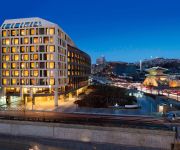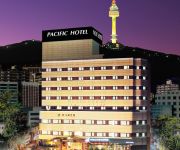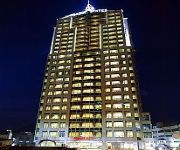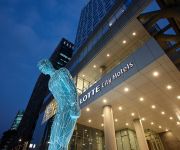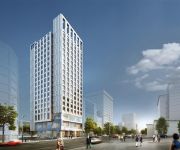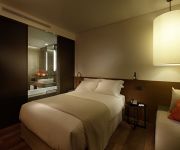Discover Waryongdong
The district Waryongdong of in Seoul is a district in South Korea a little north-east of Seoul, the country's capital city.
Looking for a place to stay? we compiled a list of available hotels close to the map centre further down the page.
When in this area, you might want to pay a visit to some of the following locations: Seoul, Jangheung, Onam, Gwangjeok and Jinjeop. To further explore this place, just scroll down and browse the available info.
Local weather forecast
Todays Local Weather Conditions & Forecast: 13°C / 56 °F
| Morning Temperature | 8°C / 47 °F |
| Evening Temperature | 15°C / 58 °F |
| Night Temperature | 12°C / 54 °F |
| Chance of rainfall | 0% |
| Air Humidity | 22% |
| Air Pressure | 1030 hPa |
| Wind Speed | Calm with 2 km/h (1 mph) from South |
| Cloud Conditions | Clear sky, covering 0% of sky |
| General Conditions | Sky is clear |
Saturday, 9th of November 2024
15°C (59 °F)
14°C (57 °F)
Sky is clear, calm, clear sky.
Sunday, 10th of November 2024
16°C (61 °F)
15°C (59 °F)
Overcast clouds, light breeze.
Monday, 11th of November 2024
17°C (62 °F)
17°C (62 °F)
Sky is clear, light breeze, clear sky.
Hotels and Places to Stay
JW Marriott Dongdaemun Square Seoul
Four Seasons Hotel Seoul
Chiwoonjung Hanok Boutique Hotel
Pacific Hotel MyungDong
ORAKAI INSADONG SUITES
BEST WESTERN PREMIER HTL KUKDO
Lotte City Hotel Myeongdong
Lotte Hotel L7 Myeongdong
LOTTE CITY HOTEL MYEONGDONG
Shilla Stay GwangHwaMun
Videos from this area
These are videos related to the place based on their proximity to this place.
An Autumn Day in Seoul
A walk in Sam Chung Dong, Seoul, in a deep autumn Day. Beautiful maple trees. Nov 13, 2010 서울 삼청동 단풍놀이.
DAEHAKRO, JONGNO, SEOUL
Daehakro is one of major tourist attractions in Seoul, South Korea. This video was taken by Olympus E-P1.
Korea Pt 68: Fun at Cheonggyecheon Stream
Cheonggyecheon is a nearly 6 km long, modern public recreation space in downtown Seoul, South Korea. The massive urban renewal project is on the site of a stream that flowed before the rapid...
Sundubu jjigae (순두부찌개) - Korea's ultimate comfort food!
Read the full article about this marvelous Sundubu Jjigae (재동순두부) right here: http://migrationology.com/2013/12/sundubu-jiggae-is-this-the-worlds-most-comforting-comfort-food/ Flying...
Bgirl Peacock Learning Headspin w/ Bboy TyphooN
Where: Seoul, Korea What: The beginning steps that lead to a headspin (oh, the days of mega dandruff!! Hey, that's the price one pays to get to do something so freakin' coolio like a headspin~...
Math in Insa-dong 인사동길의 수학
Presenting the most popular tourist spot in Seoul while looking for math-related things there... Enjoy it!
INSADONG SEOUL - KOREA = 仁寺洞・韓国
2012.04 Seoul Library http://picture.dwi.jp/ http://www.youtube.com/user/jojiwatanabe.
다함께 한일친구를 만드는 모임 정기모임 장소 日韓大好きオフ会場所
다함께 한일친구를 만드는 모임 : 日韓大好き의 정기교류회 장소입니다. 길 잃지 마시라고 정성드려 만들었어요!! 日韓交流会「日韓大好き」のオ...
Seoulamente Briana Episode 29:P Art School? Some sort of school?
I want to study everything. Except math.
Videos provided by Youtube are under the copyright of their owners.
Attractions and noteworthy things
Distances are based on the centre of the city/town and sightseeing location. This list contains brief abstracts about monuments, holiday activities, national parcs, museums, organisations and more from the area as well as interesting facts about the region itself. Where available, you'll find the corresponding homepage. Otherwise the related wikipedia article.
Korea under Japanese rule
Korea under Imperial Japanese rule refers to the culmination of a process begun in 1876 whereby a complex coalition of Meiji Government officials, Business officials and Military officials sought to subjugate Korea both politically and economically as a "protectorate" after the fashion of International Law at the time.
Changdeokgung
Changdeokgung (Hangul, 창덕궁, 昌德宮; literally, "Prospering Virtue Palace") -- also known as Changdeokgung Palace or Changdeok Palace -- is set within a large park in Jongno-gu, Seoul, South Korea. It is one of the "Five Grand Palaces" built by the kings of the Joseon Dynasty (1392–1897). As it is located east of Gyeongbok Palace, Changdeokgung, along with Changgyeonggung, is also referred to as the "East Palace" (동궐, 東闕, Donggwol).
Sungkyunkwan University
Sungkyunkwan University was founded in 1398 as the highest national educational institute in the early years of the Joseon Dynasty in Korea. As the oldest university in East Asia, it has fostered leaders of Korean society for over 600 years. Now Sungkyunkwan University (also known as SKKU or simply Seongdae) is a private university in Seoul and Suwon, South Korea.
Changgyeonggung
Changgyeong Palace is a palace located in Seoul, South Korea. Originally the Summer Palace of the Goryeo Emperor, it later became one of the Five Grand Palaces of the Joseon Dynasty. The palace was originally built as "Suganggung" by King Sejong for his father, Taejong, but in 1483 renovated and enlarged by King Seongjong at which time it received its current name. During the Japanese colonial period, the Japanese built a zoo, botanical garden, and museum on the site.
First Republic of South Korea
The First Republic of South Korea was South Korea's first independent government, ruling the country from 1948 to 1960. It succeeded USAMGIK, the United States military government, which ruled the area from 1945 to 1948. The First Republic was established on August 15, 1948, with Syngman Rhee as the first president. Like subsequent governments, it claimed sovereignty over the entire Korean peninsula, although it only had power over the area south of the 38th parallel.
Second Republic of South Korea
The Second Republic of South Korea was the government of South Korea for eight months in 1960 and 1961. It succeeded the First Republic, but was followed by a military government under the Supreme Council for National Reconstruction.
Third Republic of South Korea
The Third Republic of South Korea was the government of South Korea from 1963 to 1972. It was presented as a return to civilian rule after a period of rule by the military junta known as the Supreme Council for National Reconstruction which had overthrown the Second Republic of South Korea in 1961. However, throughout this period the presidency was held by Park Chung-hee, who had also been an influential member of the junta.
Anguk Station
Anguk Station is a station on the Seoul Subway Line 3. Anguk station is the subway station nearest to the Insadong and Samcheongdong districts, as well as the ancient royal residence of Unhyeongung.
Hyehwa Station
Hyehwa Station is a station on the Seoul Subway Line 4. It is located in the center of the area commonly known as Daehangno, and much of the ridership of this station comes from the nightlife scene. The Seoul National University Hospital and School of Medicine is located to the southwest.
Jongno 3-ga Station
Jongno 3(sam)-ga Station is an underground station on lines 1, 3 and 5 of the Seoul Subway in South Korea. In December 2010 the station is recorded as having the fifth highest WiFi data consumption of all the Seoul Metropolitan Subway stations, following Express Bus Terminal Station, Sadang Station, Dongdaemun Station and Jamsil Station.
Jongmyo
Jongmyo is a Confucian shrine dedicated to the memorial services for the deceased kings and queens of the Korean Joseon Dynasty. According to UNESCO, the shrine is the oldest royal Confucian shrine preserved and the ritual ceremonies continue a tradition established since the 14th century. Such shrines existed during the Three Kingdoms of Korea period but only the shrines for the rulers of Joseon remain. The Jongmyo Shrine was added to the UNESCO World Heritage list in 1995.
Unhyeongung
Unhyeon Palace, also known as Unhyeongung Royal Residence, is a former Korean royal residence located at 114-10 Unni-dong, Jongno-gu, Seoul, Korea. It was formerly the residence of Prince Regent Daewon-gun, ruler of Korea during the Joseon Dynasty in the 19th century, and father of Emperor Gojong. Gojong himself also lived in this residence until age 12 when he assumed the throne.
Tapgol Park
Tapgol Park, formerly Pagoda Park, is a small (19,599 m²/23,440 yd²/4.84 acre) public park located at 97 Jongno (street), Seoul, South Korea. This park was once a site of Wongaksa (Buddhist Temple). The word tap means "pagoda", and the park gets its name from the Wongaksa Pagoda, a 10 storied stone pagoda located in the park. It was previously the site of a 15th century Buddhist temple, and a 10 storied stone pagoda and a few relics of the temple still can be seen in the park.
Dansungsa
Dansungsa, established in 1907, was the first movie theatre in Korea. It is located in Jongno 3-ga, Seoul. Korea Loyal Flight became the theatre's first ever premiere in 1919. Chunsa Na Woon-gyu's Korean folk movie, Arirang, followed, premiering in the theatre in 1926. Chunhyanjeon became the theatre's third premier in 1935. In 1963, the South Korean government declared October 27, the same day when Korea Loyal Flight premiered at Dansungsa, to be the Korea Film Day.
Gansong Art Museum
Gansong Art Museum is the first modern private museum of Korea and was founded by Jeon Hyeongpil (전형필 全鎣弼) in 1938. The museum was named after the pen name of the founder, Gansong (간송 澗松). The aim of the foundation was to prevent Japanese removal of Korean cultural properties, during the Japanese occupation. At times, numerous Korean cultural properties were taken to Japan, such as Goryeo porcelains, statues of Buddha made in Silla kingdom, documents and books made in Joseon dynasty.
Hansung University Station
Hansung University Station is a station on the Seoul Subway Line 4. It is also called Samseongyo Station. The university with the same name is about a half-mile away from this station. The Holy Spirit Campus of the Catholic University of Korea is located closer, to the southwest.
Bukchon Art Museum
Bukchon Art Museum is an art museum in Seoul, South Korea. It has 150 pieces of Korean modern art, 200 pieces of Chinese art, 2500 of old documents of Joseon dynasty in total of 2850.
Han Sang Soo Embroidery Museum
The Han Sang Soo Embroidery Museum is an art museum specializing in Korean embroidery located in Gahoe-dong, Jongno-gu, central of Seoul, South Korea. It was established by Han Sang Soo (한상수, born c. 1934) who holds a title as a jasujang (자수장, embroidery artisan) of the 80th Important Intangible Cultural Property designated by the Cultural Heritage Administration of South Korea.
Gahoe Museum
Gahoe Museum is a private museum of South Korea, located in Gahoe-dong, Jongno-gu, Seoul. It was established in 2002 and houses, over 1,500 relics consisting of 750 amulets, 250 items of folk paintings, approximately 150 classical books, and 250 other odd items.
Seoul Education Museum
The Seoul Education Museum is an education museum in Seoul, South Korea.
Tibet Museum (South Korea)
The Tibet Museum is a museum dedicated to Tibetan culture in Sogyeok-dong, Jongno-gu, Seoul, South Korea.
World Jewellery Museum
The World Jewellery Museum is a museum in Seoul, South Korea.
Bukchon Hanok Village
Bukchon Hanok Village is a Korean traditional village with a long history located between Gyeongbok Palace, Changdeok Palace and Jongmyo Royal Shrine. The traditional village is composed of lots of alleys, hanok and is preserved to show a 600-year-old urban environment. Now it is used as a traditional culture center and hanok restaurant, allowing visitors to experience the atmosphere of the Joseon Dynasty.
Jeongdok Public Library
Jeongdok Public Library is a library in Seoul, South Korea. It is located in Hwa-dong, Jongno-gu, on Bukchongil. On the campus of Jeongdok Public Library is Jongchinbu, Seoul Tangible Cultural Property number 9. Jongchinbu was constructed in 1433 and is one of three remaining Joseon Dynasty government buildings. The rest were destroyed in the Japanese invasions, occupation, or the Korean War. Until February 1976, Kyunggi High School was located in the campus.
Hyehwamun
Hyehwamun (Hangul 혜화문, Hanja 惠化門; also known as Northeast Gate) is one of the Eight Gates of Seoul in the Fortress Wall of Seoul, South Korea, which surrounded the city in the Joseon Dynasty. The gate is also known as Dongsomun (동소문, “East Small Gate”).


